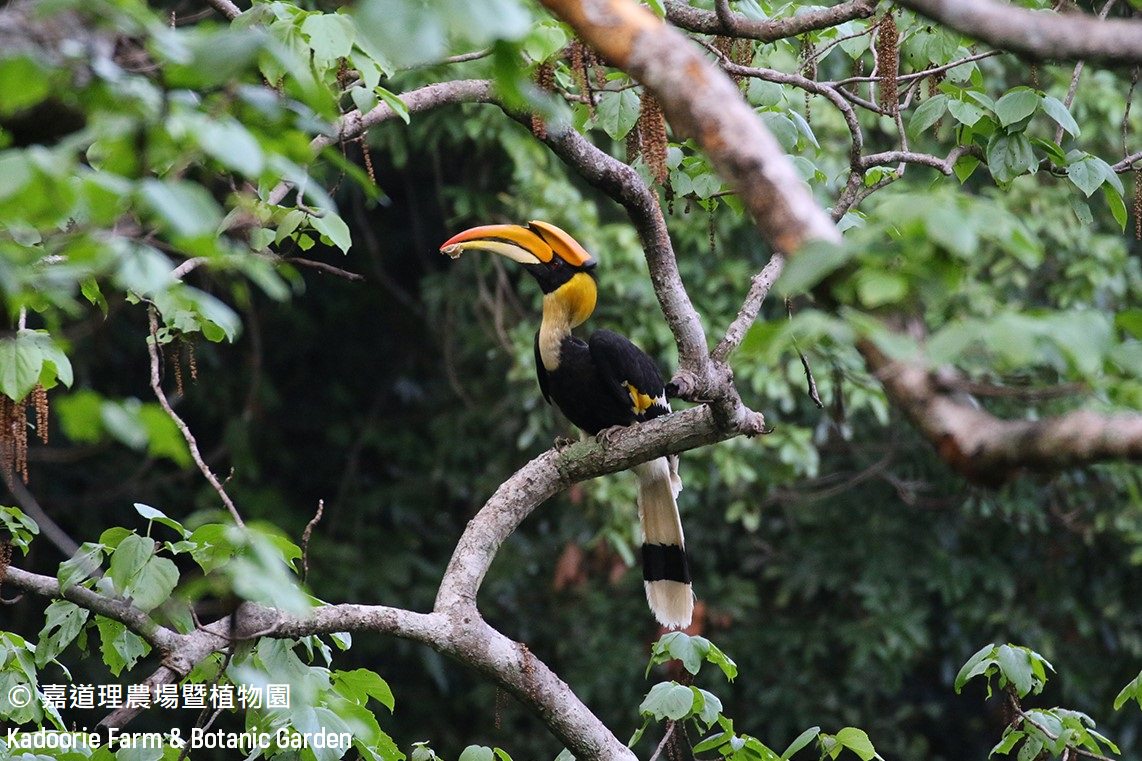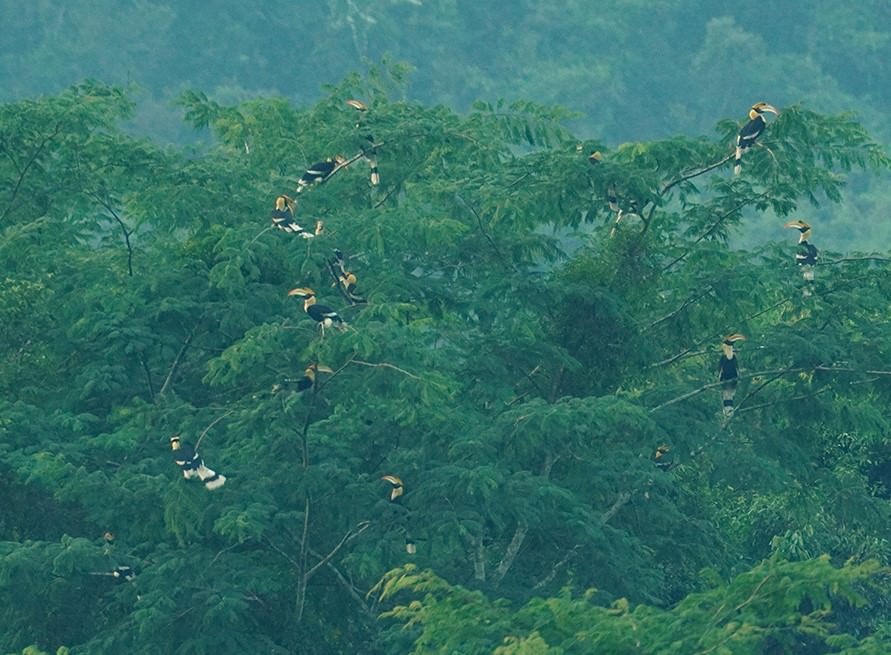Rare sighting: Flock of more than 100 hornbills spotted in Yunnan
China’s largest flock of hornbills
Asian hornbills often fly, feed and roost in flocks. In Thailand, researchers observed over 1,000 Wreathed Hornbill (Rhyticeros undulates) flying together to their roost site, while in Malaysia, scientists marvelled at a gathering of 2,421 Plain-pouched Hornbills (Rhyticeros subruficollis).
But such massive get-togethers are rarely documented for China’s five hornbill species.
Thus it came as a surprise when a large flock of 102 Wreathed Hornbills and 45 Great Hornbills (Buceros bicornis) was spotted during a field survey on 12th October at Tongbiguan Nature Reserve in western Yunnan Province. This largest hornbill flock ever recorded in China must have created quite a scene since adult birds weigh 2 to 3 kg, and boast a wingspan of 1.5m.

The Great Hornbill is the largest of Asian hornbills. When it spreads its wings, it is 1.5m across.

The 16 Great Hornbills pictured above form part of the largest hornbill flock recorded in China thus far (Photo Credit: Ban Dingying)
Flocking behaviour in hornbills
During the non-breeding period (July to January), hornbills often congregate. This behaviour can be divided into three categories:
- Foraging Flocks (“Communal Table Diners”): This loose gathering of hornbills happens near food trees. After feasting on fruits, the birds go their own way.
- Feeding Flocks (“Lunch Buddies”): Some form stable groups to forage together for a few hours to a few days.
- Communal Roost (“Roommates”): The largest flocks form at dusk to forage and fly to their night roost.
.jpg)
Dehong is the only place in China where Wreathed Hornbills live
.jpg)
The 16 Wreathed Hornbills pictured above form part of the largest hornbill flock recorded in China thus far (Photo Credit: Zhu bianyong)
China’s Valley of Hornbills
Yunnan’s Tongbiguan Provincial Nature Reserve is hailed as “Valley of Hornbills” among Chinese birders. In China, Wreathed Hornbill only occurs there, while the area is the only place where the Great Hornbill is regularly seen in recent years. There, numerous large False Hemp Trees (Tetrameles nudiflora) provide tree holes that hornbills use to breed. Wreathed Hornbill, Great Hornbill and Oriental Pied Hornbill (Anthracoceros albirostris) are known to reproduce there.
Tongbiguan is also home to the largest patch of Shorea-dominated dipterocarp rainforest in China. More and more new wildlife species and records are being discovered there.
.jpg)
Tongbiguan’s False Hemp Trees provide tree holes that hornbills need to breed (Photo Credit: Zhang Lixiang)
.jpg)
Tongbiguan is home to the largest patch of Shorea-dominated dipterocarp rainforest in China
Conservation work
Dedicated hornbill conservation work in Tongbiguan kicked off in 2015 after Kadoorie Farm and Botanic Garden, Tongbiguan and the local government co-organised an international workshop on hornbill conservation in China in Yingjiang County of Dehong Prefecture. Delegates signed the Yingjiang Declaration to enhance conservation effort for Chinese hornbills; and came up with action plan.
Since then, Tongbiguan started to monitor hornbills and implement conservation measures. Now there are 12 hornbill nest monitoring stations and hornbills have bred there successfully for five consecutive years.
Recently, Tongbiguan has been actively collaborating with KFBG and other conservation organisations to develop sustainable ecotourism and create community protected areas. We hope such effort could further enhance the long-term survival of hornbills in China.

Fifty representatives from China and abroad gather in Yingjiang, Yunnan, to discuss hornbill conservation in China
References
Ho H. C. and Supari, S. (2000) Observation of Plain-pouched Hornbills A. subruficollis in Tasek Temengor, peninsular Malasia. Forktail 16:65-67
Kinnaird, M. F. and O’Brien, T. G. (2007). The ecology and conservation of Asian hornbills: Farmers of the forest. The University of Chicago Press, Ltd., London, 315 pp.
Poonswad, P. and Kemp, A. C. (1993) Manual to the Conservation of Asian Hornbills. Sirvatana Interprint Co., Ltd., Bangkok, 544 pp.

